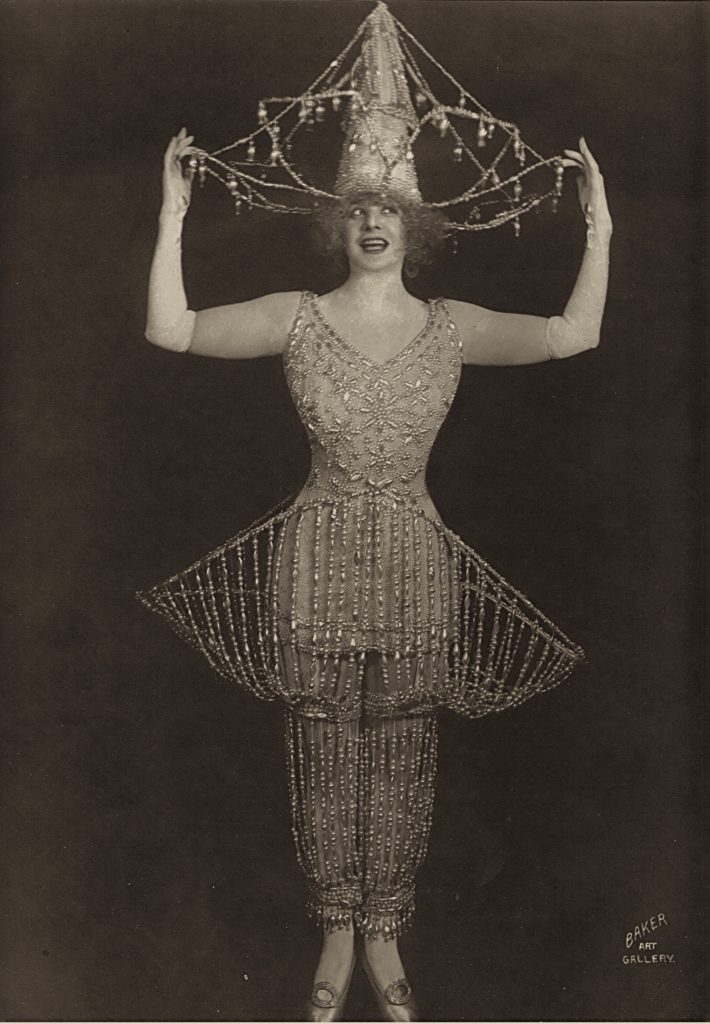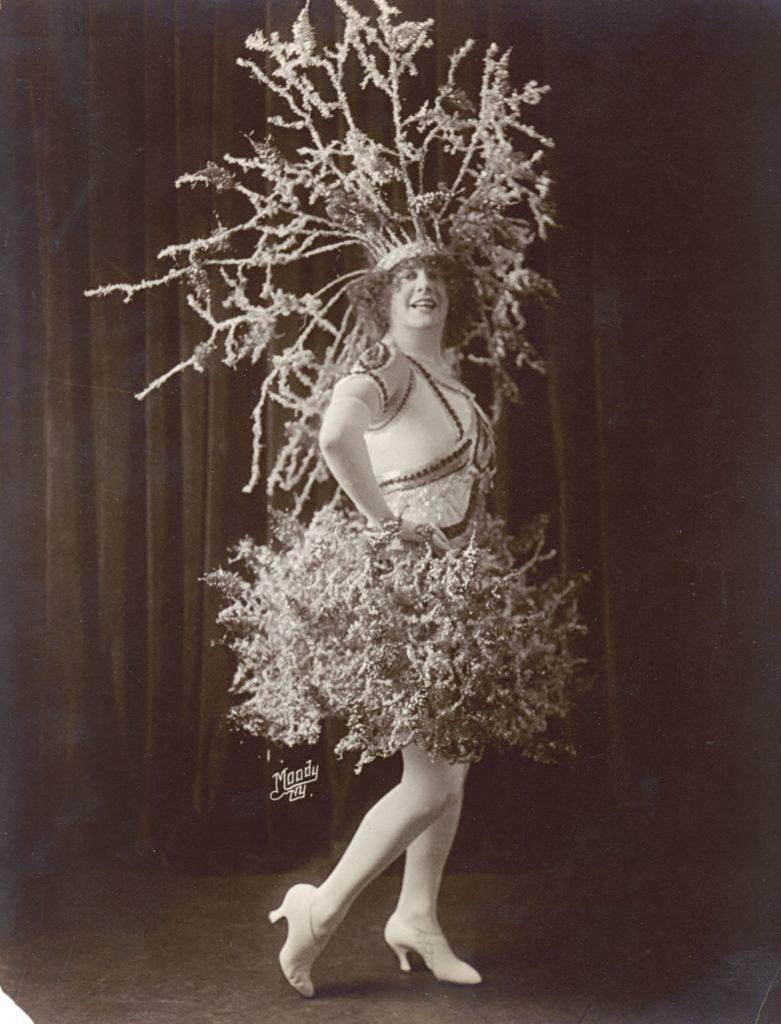Vaudeville ruled the Canadian stage from the 1880s to the 1920s. A typical show included skits, music, an alley oop (or acrobatic act), trained animals, juggling, belly dancers, ballet dancers, and a headline act, often a rebellious woman.
In 1910, the top headliner in North America was Eva Tanguay, known as “the Queen of Vaudeville,” who was the Lady Gaga of that era. Born in Marbleton, Quebec, and raised in the Franco-American Massachusetts mill town of Holyoke, Tanguay was fluent in French and English. She performed in English, singing suggestive songs, spinning like a cyclone in outrageous outfits, and peppering her routine with jokes. When the Lincoln penny was launched in 1909, Tanguay appeared in a dress made of pennies, tearing them off one by one and throwing them into the audience.
She performed in Montreal on several occasions. The closest she ever came to performing in Quebec City was during the revelry of Mardi Gras in 1914, when people went around in costume and “a versatile male impersonating Eva Tanguay entertained the night staff” at the Quebec Chronicle office.

New England Historical Society

Billy Rose Theatre Division, The New York Public Library
The New York Public Library Digital Collections, ps_the_2589
Further Reading
Erdman, Andrew L. Queen of Vaudeville: The Story of Eva Tanguay. Ithaca, NY: Cornell University Press, 2012.